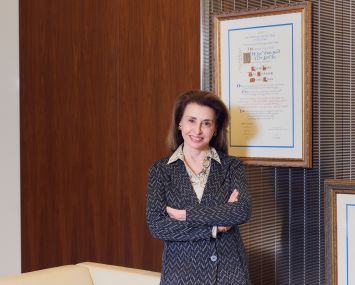Sans Big Deals, NYC’s Investment Sales Market Suffers in the Second Half of 2016
By Rey Mashayekhi February 28, 2017 8:10 pm
reprints
In the second half of 2016, New York City saw a significant drop in money spent on investment properties, according to a new report from the Real Estate Board of New York provided first to Commercial Observer.
REBNY attributed the $7.5 billion year-over-year decline to an absence of multiple major billion-dollar deals like those seen in 2015 (such as Blackstone Group’s $5.4 billion acquisition of Stuyvesant Town-Peter Cooper Village and SL Green Realty Corp.’s $2.6 billion purchase of 11 Madison Avenue).
While overall transaction volume across the five boroughs dropped by only 1 percent, or 11 transactions, to 2,880 year-over-year, the total dollar volume plunged 22 percent to $26.8 billion.
“The New York City investment sales market experienced stable activity and a moderate dip in total consideration (monetary value for recorded transactions) in the second half of 2016 compared to the second half of 2015,” the report says.
Michael Slattery, REBNY’s senior vice president of research, told CO that excluding the Stuyvesant Town-Peter Cooper Village deal, the dollar volume decline in 2016 would be “less than 10 percent. He added that the 22 percent drop “just isn’t reflective” of the overall state of the market at the end of last year.
A jump in sales of garages, gas stations and vacant land citywide between July and December 2016 is cause for optimism, according to REBNY, which noted a 28 percent increase in such deals—including a 59 percent jump in Queens. (Those asset classes also accounted for 37 percent of Brooklyn’s total dollar volume in the second half of last year.)
“Those [properties] are typically development sites,” Slattery said, touting that the increase in those transactions could bode well for the city’s development economy. “People are not buying gas stations to pump gas anymore, and certainly not at those prices.”
Manhattan continued to dominate the city’s investment sales market, with 63 percent of all deals recorded in the last six months of 2016, according to REBNY. The largest deal in that period was Hong Kong-based Real Summit Investment’s $1.15 billion acquisition of a 49 percent interest in 3 Bryant Park, also known as 1095 Avenue of the Americas—the only recorded transaction to top $1 billion.
But the borough underperformed compared with the previous year, seeing a 28 percent decline in dollar volume—to $17 billion from $23.8 billion—on top of a 6 percent drop in recorded deals.
There was more positive news in the Queens and Staten Island markets, which recorded 6 percent and 31 percent year-on-year gains, respectively, in the number of transactions recorded in the second half of last year. Queens’ transaction dollar volume remained virtually flat at $3.54 billion, while Staten Island’s more than doubled to $492 million, thanks in large part to three deals totaling $225 million, including a $122 million vacant site at 500 Bloomfield Road in Bloomfield.
Brooklyn saw a 13 percent drop in transaction dollar volume, to $4.4 billion, as well as a 6 percent drop in number of deals to 954 transactions. The Bronx saw a 3 percent dip in transactions to 392 as well as a 19 percent decline in dollar volume, to $1.4 billion.
David Schechtman, the senior executive managing director at Meridian Investment Sales, acknowledged the less-than-robust investment sales market at the end of last year, but expressed optimism about 2017. He told CO that “a great deal of the fervor has returned” to the market, and said this February has been “nothing short of wonderful.”
That’s in part due to the promised return of the 421a tax abatement program, Schechtman said, “even in advance of its broad implementation,” which “is already spurring development.”


